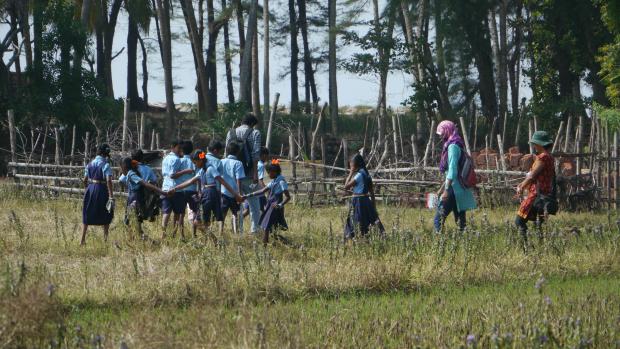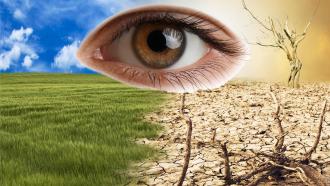
Photo : Dennis C J / Research Matters
Every semester, I start my environmental science class with a question to my students -- “why should you conserve the environment?” My students, all of whom are new to college but have received some instruction in environmental sciences during their schooling, fire away a barrage of answers that generally fall within five major lines of thought -- to preserve it for our future generations, to improve our own lives, to stop resource depletion and pollution, to save the dwindling tiger/elephant/rhinoceros population or biodiversity and, to arrest climate change.
I then spend the remainder of the class playing the devil’s advocate to deconstruct their arguments. How do you care about biodiversity loss, when most of the food or natural resources you consume, is not from the natural environment? How does a tiger/elephant/rhinoceros extinction diminish your life in any way when you have only ever seen them on your TVs where they will continue to exist long after they go extinct? If in the last seventy years, India has seen a rise in its overall quality of life by consuming natural resources, how do you claim that it will be further improved by now focusing on conserving them? Also, if by resource depletion, you mean oil or coal supplies, then there is not much to worry. Global crude oil and coal estimates are continuously revised and are not showing any signs of dying out. As far as pollution is concerned, we have air/water purifiers which though might be slightly inconvenient to use (and we do use them regularly without feeling much inconvenienced), effectively mitigate the problem. Finally, human civilization on the whole has never showed much care for the future generation because most of it has almost always had enough problems to deal with within the current generation; caring about the future has always been a privilege of the very few.
Within these lines of thought, why should you try to fight climate change, since you will most likely not reap the benefits of your efforts, but will definitely experience its adverse effects? So then, I repeat the question, why should you conserve the environment? What do you get out of it? Now, there is a silence that looms over in the class and a cogent response which can counter these arguments goes missing.
To be clear, I am not trying to pick fault with my students, whom I consider as some of the best in the country. I am fairly certain I will elicit similar responses from students elsewhere in the country. This is expected because of how they have been taught environmental science thus far. With the primary focus on dispensing a collection of facts and figures about the environment, and prescribing oversimplified solutions to overgeneralized problems like portraying deforestation as bad and planting trees as good, the environmental science education in this country falls short in meeting its ultimate goal -- making students really aware of the single biggest issue of our time and inspire them to work towards it. For sure, most of the students I have taught already know what global warming is or what different kinds of pollution are -- the credit for which goes entirely to their environmental science education. But, by not understanding their personal equation to the problem, they fail to internalize the gravity of the issue and therefore, lose the ability to relate to the need to solve that problem and, even ignore it when it feels inconvenient.
This is scary for a few reasons. Firstly, this kind of apathy undermines national and/or global efforts to curb environmental problems, which often require some level of personal sacrifice and deliberate action. Secondly, these students are already, or will soon be, eligible to vote and have a valuable say in national conversations about environmental policies. If their understanding of any environmental problem is shallow, then it’s not difficult to imagine how well thought out the policy they support to solve that problem will be. Last and most importantly, we are fortunate to live in a country that does not have a prominent climate change denying movement. But, if my rather simple arguments could stump them, who is to stop someone from framing similar arguments in a more compelling manner and actually flip their stance, especially at a time when it may seem more convenient to do so? That would be devastating to our entire environmental conservation efforts and the country.
_3.jpg)
I believe we can rectify this shortfall is by allowing students to form more personal reasons to protect their environment. It is good that most environmental science classes appeal to their goodness of hearts and morals and encourage them to think about the greater good. But, research has constantly shown that doing this alone has almost never lead to worthwhile results. One needs to identify a personal stake in any problem to truly consider any reform. Teachers should enable this by framing environmental science classes as a space that allows students to form a personal association to their environment and internalize the problems that plague it.
We can do this by first updating the recommended environmental science books to discuss relevant problems of the day. For example, many Indian textbooks still talk about ozone layer depletion as an issue; why is that? After the ratification of the Montreal protocol in 1987, the ozone hole over the antarctic has been steadily closing and is expected to be back to pre-1980s level by 2075. This global issue, as declared by many, is now solved. These books should rather put more emphasis on specific national environmental problems rather than just the few popular global ones.
In addition, the course should be complemented with in-class discussions about local problems at the state/city/district level to put more emphasis on their connection to the issue. This should be done in a way that strives to capture its complexity from different perspectives --economic, social, gender etc., and move away from creating black and white scenarios. Most environmental problems do not have clear bad/good actors, and neither do they have clear cut solutions. Once students realize how close the problem is to their lives and understand the way it affects them directly, they would be far more willing to pay attention to it and try to find a solution that is sufficiently comprehensive for the problem.
Another way to let them form more personal reasons to protect their environment is to actually expose them to it. For as far back as I can remember, I have actually never read much about Indian flora or fauna in my science textbooks. This is true for my students as well. If they only see the tiger/elephants/rhinoceros as species which are in dire need of conservation in this country, they are dangerously ill-informed about the state of India’s biodiversity. They also cannot do much about protecting those particular species other than contributing financially to their conservation, which is again a very indirect way of connecting to the cause.
Instead, in most parts of this country, one only needs to look in their own backyards, or the closest natural habitat to find trees, birds and amphibians among others which face higher odds of extinction. The benefit of focusing on these species is that they are easy to observe which requires next to no training, they also possess a certain visual appeal and, most importantly, the students can actually do a lot to directly contribute to their conservation. They can participate in the rapidly growing citizen science initiatives like birdcount.in, indiabiodiversity.org to name a few in this country to report their presence in a certain location and take part in online discussions about species identification, perceived threats and reporting of species’ behavior. By doing this, they not only gain a first-hand experience in the rigors of scientific process and the difficulties associated with conservation, but there is also a high chance that they might actually form a personal association with the species they are observing and become deeply concerned about its problems. This will give them a personal reason to actively contribute to that species’ conservation and be more mindful of threats that biodiversity, in general, across this country face. Environmental classes should allow this to happen by giving space and credit for this kind of experiential learning as a part of regular class work.
At the end, if there is anything we can learn from the political debates happening across the world, is that facts are easy to ignore, but experiences are not. We need to heed to this wisdom and revamp our environmental classes to become more personal and experiential to encourage students to find more personal reasons to conserve their environment and progress the country’s environmental efforts in a comprehensive and fruitful manner.






